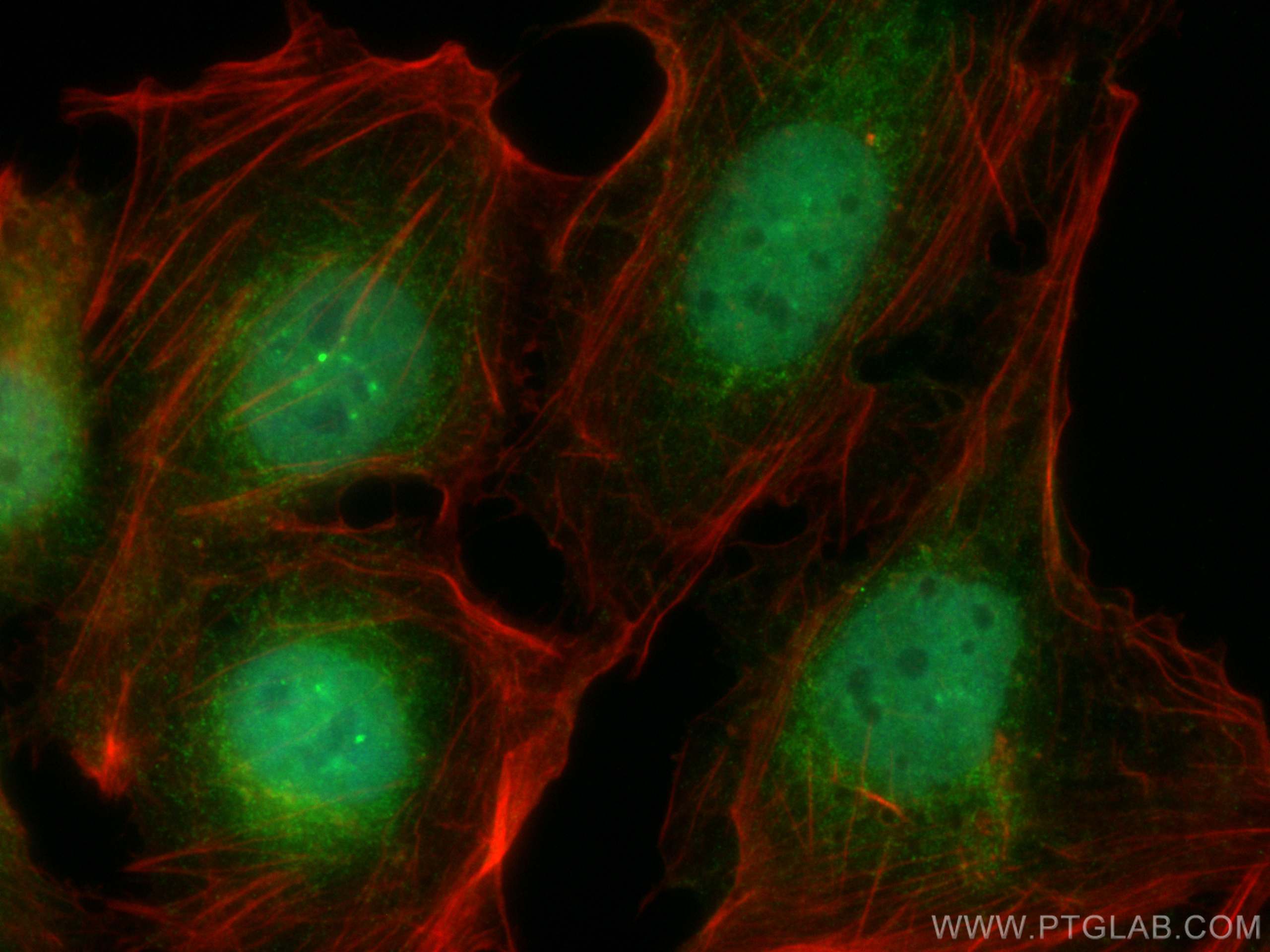Anticorps Monoclonal anti-SNX15
SNX15 Monoclonal Antibody for IF
Hôte / Isotype
Mouse / IgG2a
Réactivité testée
Humain
Applications
IF
Conjugaison
CoraLite® Plus 488 Fluorescent Dye
CloneNo.
1A10B7
N° de cat : CL488-68239
Synonymes
Galerie de données de validation
Applications testées
| Résultats positifs en IF | cellules U2OS, |
Dilution recommandée
| Application | Dilution |
|---|---|
| Immunofluorescence (IF) | IF : 1:50-1:500 |
| It is recommended that this reagent should be titrated in each testing system to obtain optimal results. | |
| Sample-dependent, check data in validation data gallery | |
Informations sur le produit
CL488-68239 cible SNX15 dans les applications de IF et montre une réactivité avec des échantillons Humain
| Réactivité | Humain |
| Hôte / Isotype | Mouse / IgG2a |
| Clonalité | Monoclonal |
| Type | Anticorps |
| Immunogène | SNX15 Protéine recombinante Ag8839 |
| Nom complet | sorting nexin 15 |
| Masse moléculaire calculée | 342 aa, 38 kDa |
| Poids moléculaire observé | 40-50 kDa |
| Numéro d’acquisition GenBank | BC009897 |
| Symbole du gène | SNX15 |
| Identification du gène (NCBI) | 29907 |
| Conjugaison | CoraLite® Plus 488 Fluorescent Dye |
| Excitation/Emission maxima wavelengths | 493 nm / 522 nm |
| Forme | Liquide |
| Méthode de purification | Purification par protéine A |
| Tampon de stockage | PBS avec glycérol à 50 %, Proclin300 à 0,05 % et BSA à 0,5 %, pH 7,3. |
| Conditions de stockage | Stocker à -20 °C. Éviter toute exposition à la lumière. Stable pendant un an après l'expédition. L'aliquotage n'est pas nécessaire pour le stockage à -20oC Les 20ul contiennent 0,1% de BSA. |
Informations générales
SNX15 belongs to the sorting nexin family and is involved in several stages of intracellular trafficking. Overexpression of SNX15 results in a decrease in the processing of insulin and hepatocyte growth factor receptors to their mature subunits (PMID: 11085978). SNX15 is widely expressed, with the highest expression in skeletal muscle, heart, brain, kidney, spleen, thymus, and small intestine.
Protocole
| Product Specific Protocols | |
|---|---|
| IF protocol for CL Plus 488 SNX15 antibody CL488-68239 | Download protocol |
| Standard Protocols | |
|---|---|
| Click here to view our Standard Protocols |


